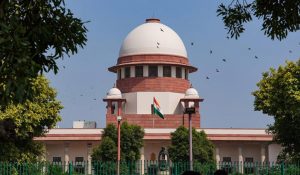EWS reservation explained: Who is eligible, will it affect general category seats
SC upheld 10 per cent reservation for the poor in jobs, education

The Supreme Court, on Monday, upheld the validity of the Constitution (103rd) Amendment, which came into effect in January 2019, providing 10 per cent reservation to people belonging to Economically Weaker Sections (EWS).
Two points about the judgment by the five-judge bench are significant. Firstly, all the judges said that economic backwardness can be a criterion for reservation. That is an important development because, if you look at the very idea of ‘reservation’, it was meant for social justice for certain sections of society that faced discrimination due to the caste system. Now, when they say economic backwardness can be a criterion, the very basis of reservation has changed.
Secondly, two judges have opined that reservation cannot continue for an indefinite period. This is also a significant observation that will have far-reaching repercussions.
According to the amendment, the reservation can be implemented in government jobs and admission to educational institutions, including private institutions. Minority institutions, however, are exempted from the amendment.
How do you qualify as an EWS beneficiary?
The EWS quota provides reservations to financially weaker persons in the general category. The central government has come out with certain parameters that states can use to identify who belongs to the economically weaker sections. There are many criteria, the primary being that the person or his family’s annual income is below Rs 8 lakh. A person coming under the EWS category should not possess more than 8 acres of agricultural land. Those with residential flat below 1,000 square feet, or residential plot below 100 square yards in notified municipalities and 200 square yards in other municipalities are also eligible for reservation under the EWS quota. As per the amendment, the Centre has set aside the 10 per cent quota, but the state has to decide who is economically weaker.
The central government released a memorandum in January that details the criteria and how an Income Certificate can be generated to avail the quota.
What is the role of the state?
The Constitutional amendment is just enabling the states to grant reservation, but it is not mandatory. The political reality, however, is that the state governments will have to implement the quota. The judgment does not mandate the state to implement the 10 per cent reservation.
What is the 50 per cent ceiling for reservation? What did the SC say?
The Constitution does not provide a ceiling. But reservation has been provided due to the special situation of the Scheduled Castes (SC), Scheduled Tribes (ST) and Other Backward Classes (OBC). In 1990, the Mandal Commission report was implemented. In 1992, in the Indra Sawhney vs Union of India, popularly known as the Mandal Commission case, the Supreme Court ordered that total reservation should not exceed 50 per cent. Today, the bench stated that this 50 per cent is a ‘flexible’ criterion that can be breached. The major difference between the 1991 scenario and now is that 10 per cent reservation has been written into a Constitutional amendment by the Centre. In fact, Tamil Nadu already has reservation of 69 per cent in the state.
Will it affect students in general category seats in educational institutions?
This can eat into the seats of a general category student who does not fit into the EWS category, say a student from a middle-class family. Because he/she will have access to only the remaining seats (after 50 per cent existing caste-based reservations and 10 per cent for EWS). But let us also not forget the fact that in OBC, there is also a concept called ‘creamy layer’, which is excluded from the benefits of reservation. If a student’s parents’ annual income is more that Rs 8 lakh, he is considered as belonging to ‘creamy layer’ and hence not eligible for reservation. The Central government criteria for the determination of those who fall under ‘non-creamy layer’ for OBC, and EWS in general category, are almost the same.
As told to Ancy K. Sunny
The author, an expert in constitutional law, is a professor at Sai University in Chennai
